From the July/August 2023 issue of Apollo. Preview and subscribe here.
This year, Parcours des Mondes promises to cement its reputation as the world’s premier celebration of the peoples and civilisations of Africa, Oceania, the Americas, Asia and the ancient world. After several iterations inhibited by complications or restrictions over travel – affecting visitors, exhibitors and the shipment of their stock – the 22nd edition of this much-loved event (5–10 September) includes more dealers from more countries and a number of new initiatives. It ought to lure back even the most reluctant travellers from the United States, who make up a significant part of the top end of these markets.
At the time of writing, some 58 exhibitors have signed up. Several already have galleries in the Beaux-Arts quarter of Paris. Others, from Belgium, Denmark, Finland, Italy, Spain, Switzerland and the United Kingdom, and as far afield as Australia, the Ivory Coast, Thailand and the United States, take up temporary residence in borrowed spaces around them.
While African art remains at the heart of the event, the geographical range and diversity of material on show is astounding. For true collectors, no subject is too arcane. One of the most appealing aspects of this field is that for such collectors, many less obviously high-quality objects remain undervalued.
As if to offer encouragement, or guidance, to those wondering where their interests or acquisitiveness may lead them, two loan exhibitions are presented. Belgian dealer Jacques Billen is a specialist in Egyptian antiquities, which his Galerie Hamarkhis is selling at Parcours des Mondes. Yet he is also a collector of African prestige weapons. Some 100 of these artefacts and ornaments, revealing the virtuosity of blacksmiths from across the continent, will be unveiled to the public for the first time. ‘UNU’ is co-curated by Bruno Claessens, who has written the accompanying catalogue.
‘Shared Passion’ celebrates the patience and perseverance of the Belgian collector Michel Vandenkerckhove and the Belgian-Congolese dealer and gallerist Didier Claes. The collection that they have built up together focuses on the abstract guardian figures of the Kota people, the power statues of the Kongo, the sculptures of the Lega and ivory Ikhoko pendants by the Pende. Claessens has compiled this catalogue too.
‘Parcours is a means for the public to learn,’ emphasises exhibitor Bernard Dulon. One of the hallmarks of the event is how dealers engage with visitors, sharing their knowledge and enthusiasm. Traditionally, they have used the occasion to publish new scholarship, often to accompany thematic exhibitions. Parcours has renewed its collaboration with the International Tribal Art Book Prize (PILAT), awarded during the fair, which recognises a newly published book in the field.
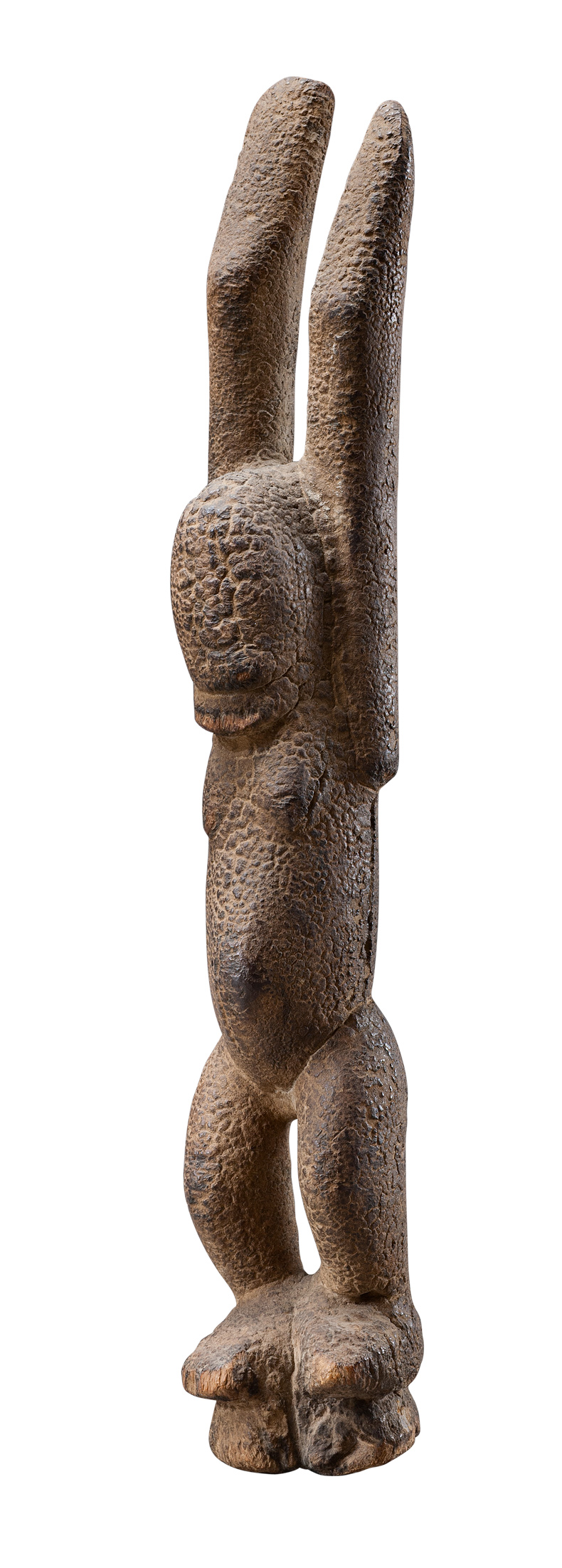
Figure (c. 1334–1436) Tellem artist, Mali. Galerie Bernard de Grunne (€250,000). Photo: Studio Frederick Dehaen Brussels
Bernard de Grunne’s exhibition and catalogue reasseses the chronology for art from the Bandiagara Escarpment in Mali. More than 40 new carbon-14 dates for the wooden sculpture of this cliff and plateau present evidence for what may be considered the longest known sequence of art production in the world (apart from ancient Egypt), from around 300 BC to around 1800. ‘This new horizon allows us to connect chronologically and geographically these styles to Upper Egypt and reopens the old debate on ancient connections between East Africa – the ancient city of Meroe in the Middle Nile – and West Africa,’ explains de Grunne. The show presents wooden neck rests by the Toloy – the first occupants of the region – which are now shown to predate the Tellem culture that followed by at least 500 years. In turn, Tellem statues on display show the transition towards the styles of the Dogon people, with a more naturalistic modelling of the body.
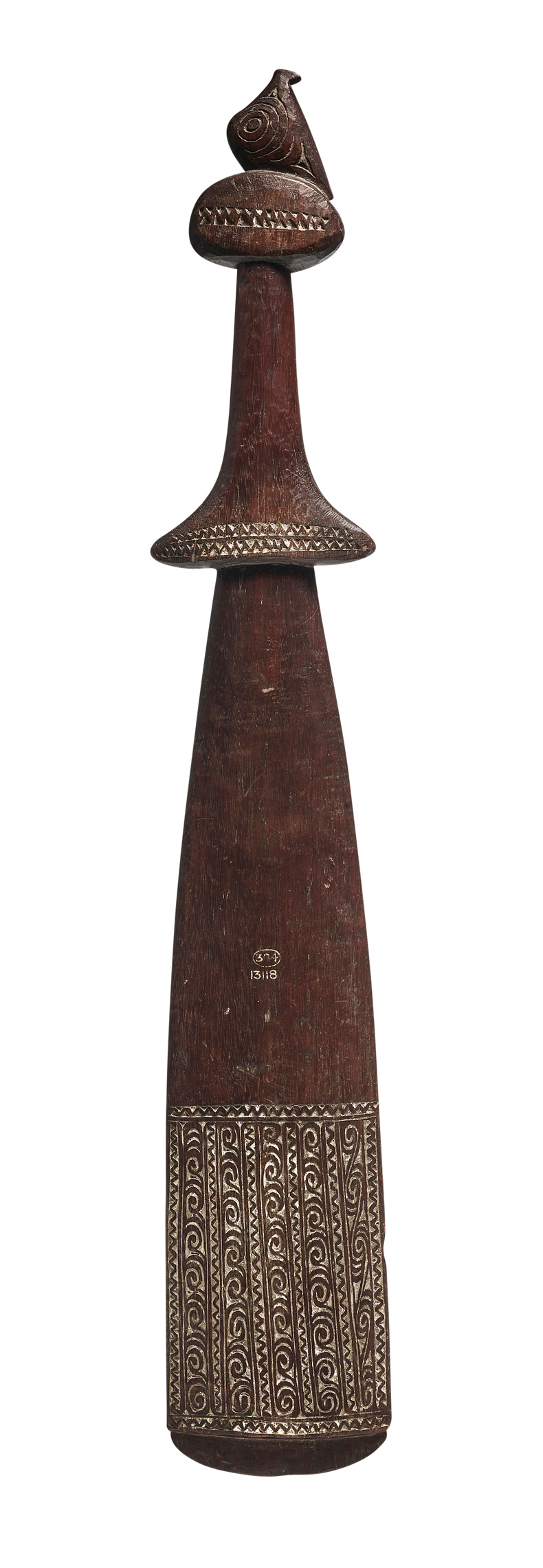
Sword or club (19th century) Massim artist, Papua New Guinea. Galerie Meyer (price on request)
Galerie Lecomte presents ‘The Mask and its Mystery’. ‘The very definition of the mask is the second face, that is to say, the spirit that inhabits it,’ explains Alain Lecomte. ‘The mask will incarnate an important ancestor or a totemic animal.’ Among the many highlights is a mask from the Ivory Coast by the Dan people, the forehead adorned with small carved horns of dwarf antelope, the face covered with sacrificial animals and the mouth remarkable for its size and expression.
‘Adventure and Erudition’ at Galerie Meyer explores the encounters between objects and collectors. Works include an Alaskan walrus-tusk drag handle or toggle, carved in the form of a swimming seal; it was collected by the missionary John Beach Driggs in around 1890–1910. There is also a fine and large 19th-century sword or club from the Massim region of southern New Guinea. With a stylised bird head on the pommel, the blade is decorated with incised scroll and zigzag motifs.
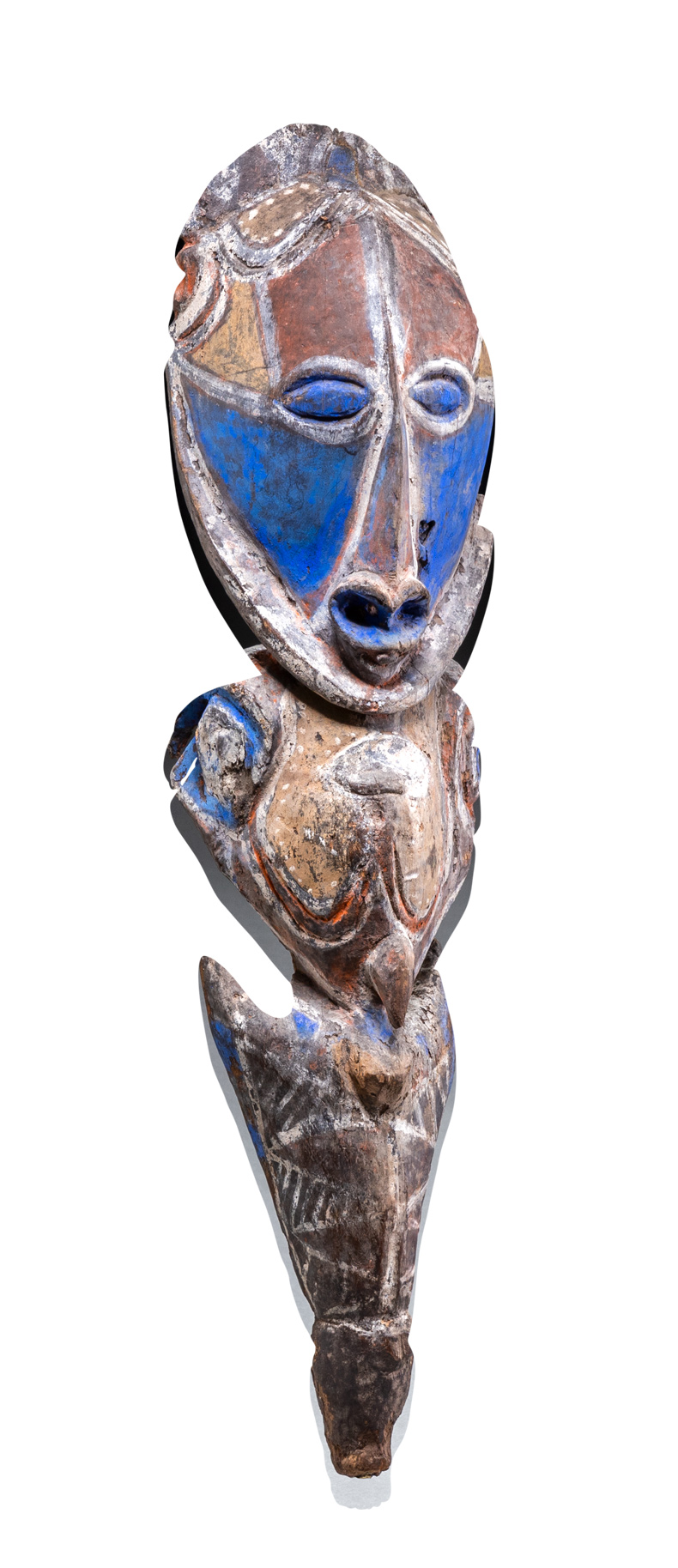
Bust (19th century or earlier), Bukie/Plains Arapesh artist, Papua New Guinea. Michael Hamson, (€85,000)
Michael Hamson is also offering Oceanic art from old collections. He presents a pre-contact stone-carved ancestral spirit bust, from the Bukie culture of New Guinea. It is the paint that animates such pieces, renewed at every ritual – and the striking blue pigment here probably derives from washing powder brought in during the German colonial period. Here, too, is one of the earliest lor (‘skull’) masks of the Tolai culture, collected in 1879 in the Duke of York Islands. Made from the front half of the skull of a revered ancestor, it was held to the face of a man when receiving wealth distributed during bride-price ceremonies.
Dalton Somaré presents a group of reliquary figures by the Kota people of Gabon, today celebrated for their precise, almost minimalist geometries. Among them is a large and powerful example from the workshop of the master sculptor Semangoy, active in the second half of the 19th century.
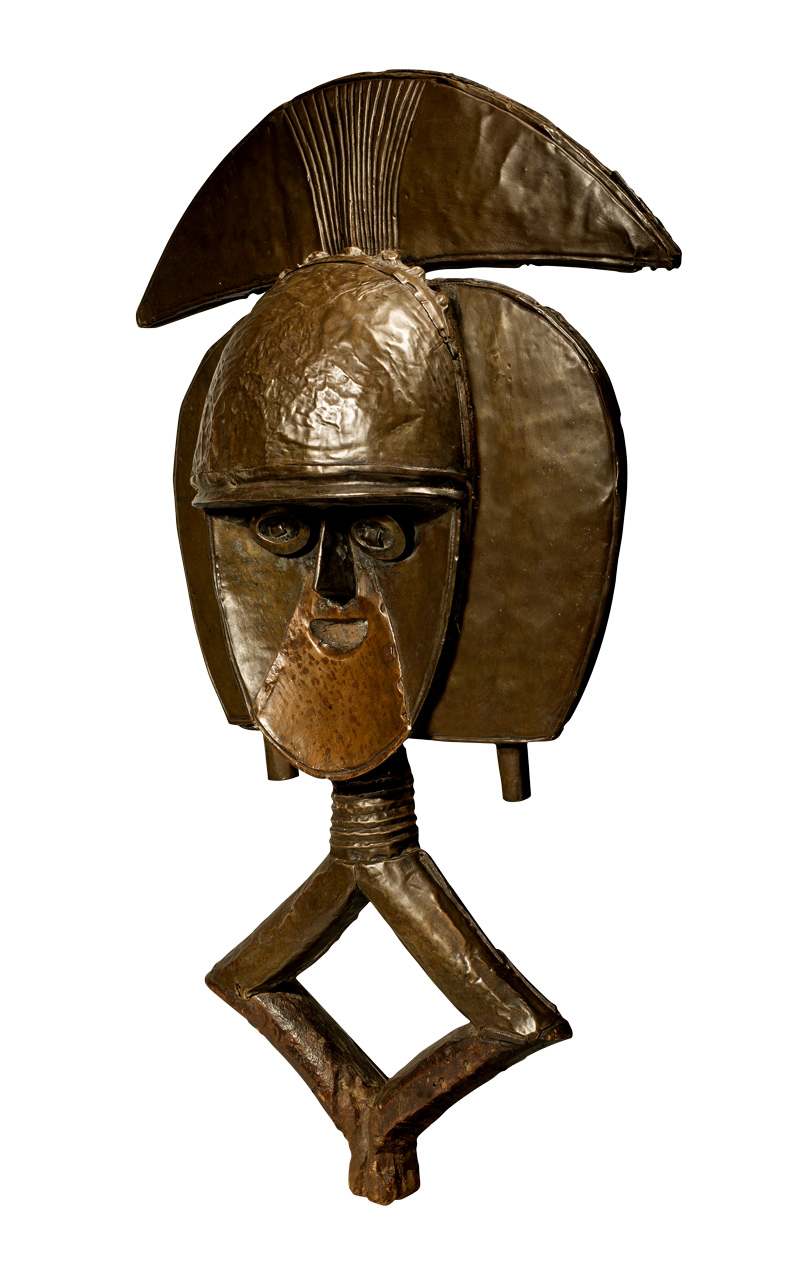
Mbulu ngulu (reliquary), (19th century), workshop of Semangoy. Dalton Somaré (€65,000)
Initiatives this year include a ‘Showcase’ section for six new dealers, while Parcours has also partnered with the Mingei Bamboo Prize for contemporary Japanese bamboo weaving. Galerie Mingei has selected 13 works from those submitted, including three by women artists. Visitors will be able to vote using QR codes for a second prize worth €2,500; first place will be decided by an expert jury.
Parcours des Mondes takes place in Paris from 5–10 September.
From the July/August 2023 issue of Apollo. Preview and subscribe here.
Unlimited access from just $16 every 3 months
Subscribe to get unlimited and exclusive access to the top art stories, interviews and exhibition reviews.

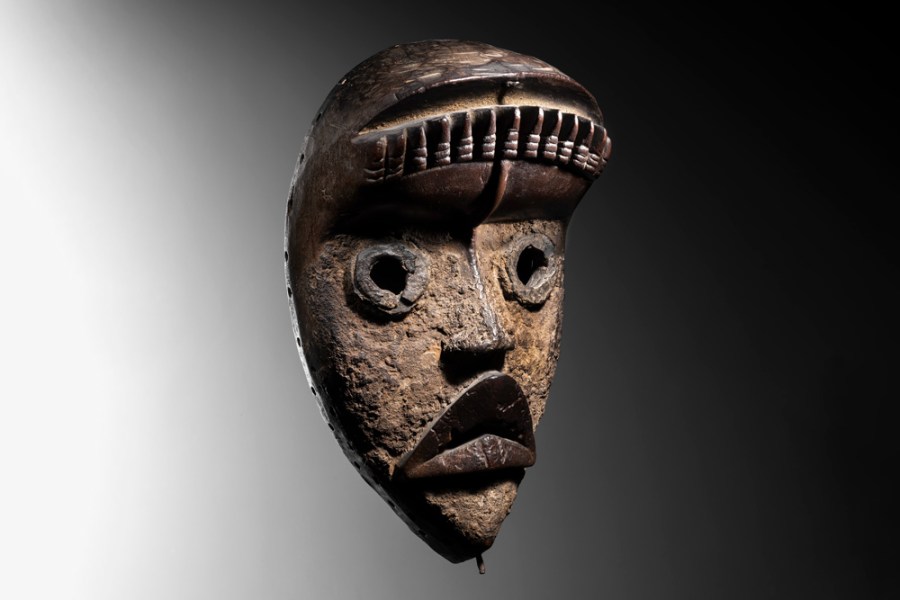
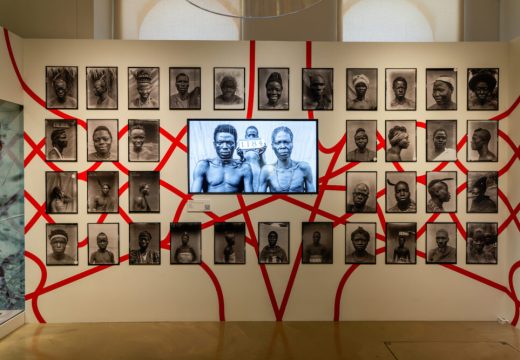
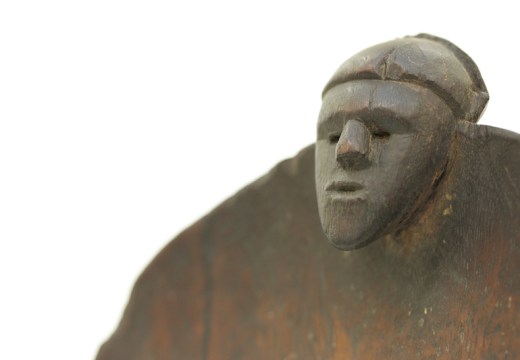
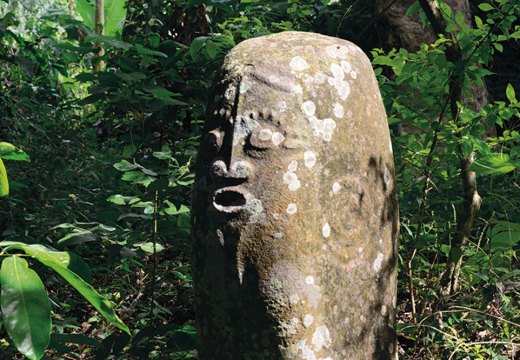








![Masterpiece [Re]discovery 2022. Photo: Ben Fisher Photography, courtesy of Masterpiece London](http://www.apollo-magazine.com/wp-content/uploads/2022/07/MPL2022_4263.jpg)
Are the art market’s problems being blown out of proportion?